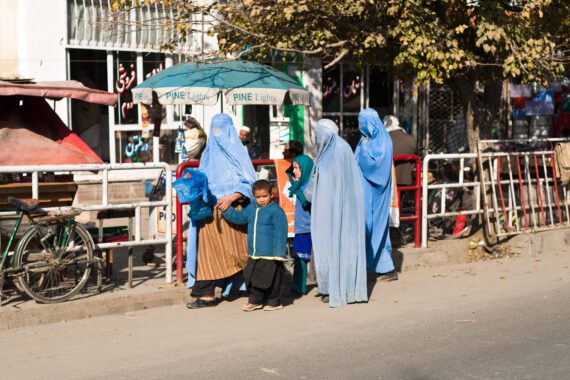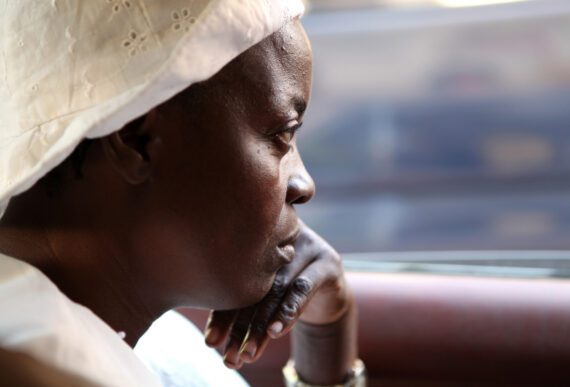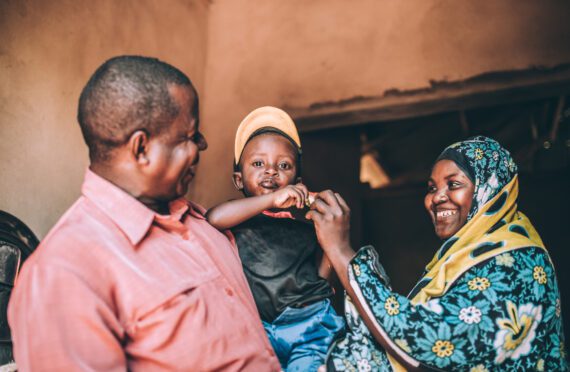Afghanistan is a hunger hotspot “of highest concern,” according to the most recent hunger hotspots early warning report, which covers June 2023 through November 2023 and is published by the World Food Programme (WFP) and the Food and Agriculture Organization (FAO).
“Highest concern” means that a large number of people are facing starvation, are projected to face starvation, or are already contending with critical food insecurity levels along with aggravating factors expected to further worsen life-threatening conditions.
In Afghanistan, 15.3 million people, 35 percent of the population, face acute food insecurity. Among them are 2.8 million people on the verge of famine, who need help urgently to prevent additional deaths and relieve suffering.
Between November 2022 and April 2023, more than 3.2 million children and 804,000 pregnant or lactating women were acutely malnourished. Almost every province had a rate of global acute malnutrition higher than 10 percent, the emergency threshold established by the U.N. Refugee Agency (UNHCR). If this threshold is reached, it is essential to take prompt action both to treat children suffering from malnutrition and to prevent others from becoming malnourished.
According to WFP and FAO, the 2023 humanitarian budget for Afghanistan is $287 million for nutrition support and $2.7 billion for food security and livelihoods. But this budget has not been fully funded.
As a result, funding shortfalls beginning in April 2023 have forced WFP to cut 10 million people from its nutrition support programs. Only about a fifth of those in need are now receiving assistance. WFP Afghanistan country director Hsiao-Wei Lee said that with already very high levels of hunger and malnutrition, “We are obliged to choose between the hungry and the starving, leaving millions of families scrambling for their next meal.”
Why is this happening?
According to Yasmin Faruki, senior policy advisor at Mercy Corps, Afghanistan’s humanitarian emergency is primarily an economic crisis. Afghanistan has long been a low-income country. During the armed conflicts that have raged for much of the past 50 years, economic development was stalled and sometimes reversed by loss of life and destruction of infrastructure. More recently, Afghanistan, like most countries, has faced high food and fuel prices, inflation, and supply chain problems. Some of these economic problems are caused by the ongoing consequences of Russia’s invasion of Ukraine, while others are primarily due to the global pandemic and its aftermath.
In 2021, the collapse of the Afghan government enabled the Taliban, an unelected force that is not recognized by the international community, to seize power. This caused most global donors to impose sanctions and/or cut off their assistance. Much of the country’s budget came from foreign assistance, so the abrupt withdrawal of financial support had a devastating impact.
Climate change also contributes to hunger in Afghanistan by causing more frequent, and more severe, natural disasters. A 5.9 magnitude earthquake in June 2022, for example, added more than 300,000 people to the number of Afghans in need of humanitarian assistance. Prolonged drought in 2022 damaged or destroyed crops as well as grazing pasture for livestock. Bread for the World continues to emphasize that effective climate action is essential to ending hunger.
Even setting aside the funding shortfalls for a moment, donors and humanitarian workers face an ongoing dilemma because of policies enacted by the country’s rulers. Sweeping human rights abuses include continued refusal to allow girls to attend school beyond the elementary grades and a near-total ban on paid employment for women. This leaves many women, particularly those without husbands, with no means of supporting themselves and their children.
Most recently, the Taliban has refused to allow humanitarian organizations, including U.N. agencies, to employ female staff. This decree erects a barrier to reaching women and children in urgent need of nutritional support and medical care. Women often cannot leave their homes in search of essential items or health care, and male aid workers and healthcare providers are not able to meet with them freely. As the update by WFP/FAO notes, “The ban on women’s participation in the humanitarian response poses a huge challenge to the delivery of quality humanitarian assistance.”
It is important to note that unless gender equity is promptly restored, Afghanistan faces a future of continued hunger and malnutrition. The absence of half the workforce prevents the economy from growing and, ultimately, making it possible for people to afford the food they need. Denial of gender equity inflicts long-term economic damage: as professionals who were educated under previous governments retire, there will not be enough younger people with the skills and experience needed to take their places, fulfilling essential roles such as educators and healthcare providers.
Michele Learner is managing editor, Policy and Research Institute, with Bread for the World.



